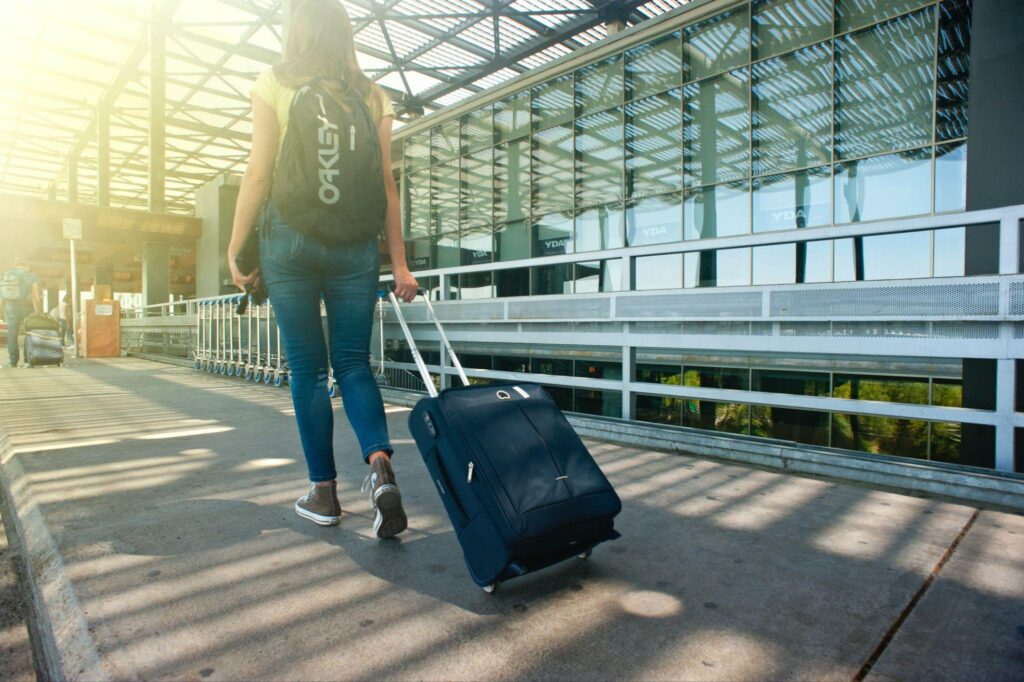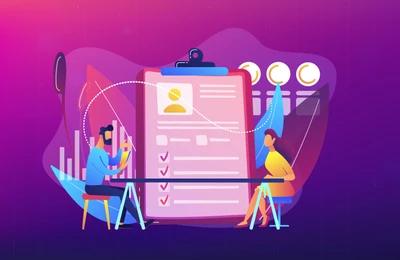Table of Contents
Introduction
According to the Board of Immigration (BOI) report, nearly a lakh student’s move abroad from India to pursue higher education. Students move to various countries worldwide to pursue their under/post-graduation in multiple fields.
Australia is one such country where thousands of Indian students move for higher education, and when it comes to living abroad, specifically in Australia, it is pretty expensive. So, let us find through this article the cost of living in Australia and how one can minimize its expenses.
Finding accommodation
It would be best if you started doing a few more things to prepare for your time in Australia now that you’ve chosen where you want to study. Making sure you have a place to reside is among the most crucial things you must take care of. We’ll look at some of the lodging alternatives you’ll have and how to start looking.
Some believe they may easily immigrate to the nation and locate a place to call home. Because you would need to remain in a hotel or hostel for a long time, this might grow very expensive. Even though there is a weekly fee, if you can’t find a place to live in a reasonable period, it might build up quickly. It is far better to ensure that you have a temporary arrangement or a rental set up before you arrive in Australia.
In light of this, the institution where you are enrolled might provide long- or short-term on-campus housing for its international students. Accommodation is offered by many colleges, particularly for undergraduates who are studying abroad. The university may have choices accessible for you to consider even if you are an international student pursuing postgraduate study. In either case, you should always consult the institution before looking into other possibilities; even if they don’t provide on-campus accommodation, they might have a list of alternatives for you to consider that you won’t find anywhere else.
Make a list of the features you desire from your apartment before you begin shopping for housing. Suppose you don’t establish these limitations before you start looking for a rental. In that case, you could end up setting yourself up for disappointment because you can’t afford that apartment you want, or it’s too distant from the university you’re attending. Here is a quick overview of some factors you should consider when looking at rentals.
- Cost: The price of your rental will vary depending on its category, location (city, state, and even street), and facilities offered. Determine what you want before you even start looking. The monthly spending limit you’re willing to set, including any additional expenses. There is a significant price difference between a one-bedroom apartment with no facilities for $400 (INR 21938.37) and one for $525 (274284.47) that includes heat, internet, water, sewer, and trash. You must consider the price in the context of all other expenses you make, even if it appears reasonable. To find rentals that fall within that range, choose a lower restriction, an “ideal,” and an upper limit for yourself.
- Location: How near or far are the rentals from your study? You should include transportation charges in your estimates if the distance is too great. Your commute can become more stressful as a result. The rental is better for you the closer it is to your university. You should also check if other crucial locations are nearby, such as a grocery shop or a doctor’s office. It’s a good idea to think about places close by for biking or walking, especially if you won’t have a car while visiting Australia. Give yourself a range to attempt to keep inside when looking for an apartment, if you can. Give yourself a minimum, ideal, and maximum limit, just like with costs, so that you can communicate that to persons you are speaking to about apartments.
- Furniture: As an international student, you should seriously consider this. The rental home you’re considering is it furnished? Even though furnished apartments can cost more each month, you save money on the furnishings you would otherwise need to buy. You won’t need to be concerned with selling or donating the furnishings when you move out. It’s up to you whether you want it furnished or unfurnished; of course, you may be able to find inexpensive furnishings.
Utilities
It would be best if you considered the additional living expenditures you will incur while moving to Australia in addition to rent. Include the following in your budget, from paying bills to buying groceries.
| Groceries/Eating Out | $140 to $280 weekly (INR 7,700 – 15,400) |
| Gas/Electricity | $10 to $20 weekly (INR 550 – 1100) |
| Public Transport | $30 to $60 weekly (INR 1650 – 3300) |
| Public Transport | $30 to $60 weekly (INR 1650 – 3300) |
| Phone/Internet | $15 to $30 weekly (INR 550 – 1650) |
| Other Activities | $80 to $150 weekly (INR 4403 – 8256) |
Leisure activities
Even though your primary purpose for coming to Australia is to study, you must ensure that you take advantage of all the great activities you can do in your spare time. Australian students who have studied there advise you to leave campus and take advantage of all the nation offers. With culturally diverse cities and incredible natural beauties unique to Australia. Are you thinking about venturing outside your comfort zone and visiting Australia? Some of the things you should think about are listed below.
- Surfing
- Hiking
- Biking/ cycling
- Fishing
- Mountain climbing
- Rock climbing
Thanks to the distinctive landscape, you may also take advantage of some highly spectacular natural beauties. There are many beaches and mountains, as you might think, but Australia also has a lot of exciting places you may visit. Here are a few more well-liked tourist attractions for visitors and international students.
- The Gold Coast: The beaches on the Gold Coast are one area to visit if you are a student in Queensland. Over 35 miles of Queensland’s coastline are comprised of 21 beaches. Some beaches have incredible waves for learning to surf on, while others are perfect for sunbathing. If you enjoy the beach, you’ll enjoy visiting the Gold Coast no matter which beach you choose.
- The victorian alps: An outdoorsperson’s paradise is the Victorian Alps. Do you enjoy biking or hiking? Fishing, what about it? It is possible here. The Victorian Alps are also a fantastic area to ski in the winter. If you spend a weekend in the mountains, there are several locations to stay nearby that are only a short drive from Melbourne.
- The great barrier reef: This is probably the one thing every traveller will advise you to see before leaving Australia. The Great Barrier Reef is the most extensive coral reef on the entire planet and a wildly popular tourist destination. In the Great Barrier Reef, practically any water activity is possible. So you may go fishing, surfing, snorkeling, or scuba diving here. You should also bring your camera because it is breathtakingly lovely.
Traveling in Australia
Public transportation systems in many Australian cities are dependable and effective. Australia’s population and economy are heavily dependent on its extensive road system. With savings for card users and other types of travelers, well-connected bus services are available in Canberra, Sydney, Darwin, Brisbane, Adelaide, Melbourne, Perth, and Hobart (such as students or pensioners).
The following information about these cities’ bus routes and associated fares is provided:
Canberra
Some passengers qualify for free travel with the MyWay adult card, and discounts are available. Cash price for a single journey at the peak level: AUD 4.9
Sydney
Opal card holders are eligible for discounts. It can be used on ferries, trains, light rail, and buses in Sydney and New South Wales.
Opal card for adults:
- AUD 3.54 to $8.69 for a single train ticket (INR 194.15 to 476.61)
- Bus fare for one trip: AUD 2.2-4.71 (INR 120.66 to 258.32)
- Price for a single ferry: AUD 6.01–7.5 (INR 329.62 to 411.34)
- Cost of light rail: AUD 2.20 to 3.66 (INR 120.66 to 200.74)
Cash value:
- Train fare for one: AUD 4.4–10.6 (INR 241.32 to 581.37)
- Bus fare for one: AUD 2.80 to 5.80 (INR 153.57- 318.11)
- Price for a single ferry: AUD 7.4–9.2 (INR 405.86 to 504.58)
- AUD 2.8 to 4.4 for a light rail pass. (INR 153.57 to 241.32)
Darwin (and other parts of Northern Territory)
Holders of particular concession cards are entitled to reduced fares (veterans, seniors, pensioners, students). There are also Flexi trip and weekly tap and ride cards available.
Cost in cash:
- A single ticket for unrestricted bus travel costs AUD 3 (INR 164.54) and AUD 7 (INR 383.92) will get you an all-day bus pass.
Adelaide
Seniors, students, pensioners, and travelers with visual impairments also receive discounts. Under-5s travel for free.
Standard MetroCard
- Trip to a single peak: AUD 3.7. (INR 202.93)
- One-way off-peak fare: AUD 2.03. (INR 111.34)
Cash value:
- AUD 5.5 (INR 301.65) for a single journey on the peak metro
- Metro one-way off-peak ticket: AUD 3.6 (INR 197.45)
Hobart
Students receive concessions. Under-5s travel for free.
GreenCard for adults:
- One-way: AUD 2.72–5.6 (INR 149.18 to 307.14)
Cash value:
- One-way flight: AUD 3.4–7 (INR 186.48 to 383.92)
Melbourne
Students receive concessions
My Card :
- 28-365-day pass: AUD 29.4 (INR 1612.47) for a 7-day pass.
Cash value:
- Myki currency AUD 2.94–4.3 for a two-hour fare. (INR 161.25 to 235.84)
- Price per day: AUD 5.88–8.6 (INR 322.49 to 471.67)
Perth
Asking the bus driver if they qualify for a 10% or 20% discount is required of passengers using SmartRider cards. Seniors, students, pensioners, and travelers who are blind are also eligible for discounts—little ones under four travel for free.
Using SmartRider cards:
- Adult single fares range from AUD 1.76 to 11.52. (INR 96.53 to 631.83)
Cost in cash:
- dayrider and Family Rider tickets cost AUD 2.2-12.8 for an adult single. (INR 120.66 to 702.03)
Concession card users on Australia’s public transportation can significantly reduce transportation costs.
In these big cities, more public transportation options are available. Suburban train lines are open in Perth, Sydney, Melbourne, Brisbane, and Adelaide. Sydney also runs ferries and a light-rail system. There are intra-city trams in Melbourne and Adelaide. Brisbane has a ferry system just like Sydney does. In all major towns and cities, cab services are also available.
For domestic travel within Australia, four leading airlines are in operation: Jetstar, Qantas, Virgin Australia, and Tigerair. By distance and season, prices change.
Health insurance in Australia
Even if you are an international student temporarily residing in Australia, it is one of the countries where you are required to carry health insurance. You must comprehend and get this health insurance plan, known as the Overseas Student Health Cover (OSHC).
Why OSHC?
While in Australia, this insurance assists in covering the costs of medical care, hospital care, medications, and ambulance services. You must obtain an OSHC if you are a student or applying for a student visa.
What is covered by OSHC, and how do I get it?
You have two payment options for your OSHC plan: through your university or directly online. You can choose your OSHC provider with the help of the Department of Health and Aging’s website.
These advantages may differ based on your insurer. You might only have basic coverage or receive more comprehensive coverage and services for a higher price. Some of your safety net components must include:
- Benefits for outpatient services are specified in the Medical Benefits Schedule (MBS) charge. This is relevant if you visit a general practitioner or medical office.
- Any in-patient services, such as surgery or prolonged medical care, will be charged the total MBS rate.
- Private and some public hospitals have shared wards (only the private hospitals associated with your OSHC provider insurance).
- Accommodations and treatments for day surgeries or outpatients.
- artificial limbs (at least a certain percent)
- $50 for each prescription drug, up to $300 (INR 16453.78) for an individual every year. Plans for more than this are available, so grab them. Consider them if you have prescriptions you regularly take for one reason or another.
There are further services that your OSHC might also pay for. Physical therapy, general optical care, and general dental care may all be covered under specific plans, although some businesses may charge extra for what is known as “generic treatment cover.” For more information on the expenses of including these therapies in your plan, speak with your OSHC provider.
Additionally, there may be a waiting period for some medications that are paid for. Pre-existing problems, whether physical, mental (for which there may be a two-month waiting period), or pregnancy-related, typically come under this category.
Initially indicated on your student visa will mark the start of the waiting period.
You are only qualified for OSHC benefits for five years unless otherwise specified by the program or university you are enrolled in. The institution must help you with the procedure of getting an extension on your OSHC plan if the course of study you are in (for instance, you are studying for both your Master’s and your Ph.D. at a specific Australian university) needs you to stay in the nation for longer than five years.
Visit the websites of the Departments of Immigration and Citizenship and Health and Aging for additional information about OSHC and how to secure health insurance for you and your family while you are studying in Australia. If you’d like to speak with them directly, your university’s office for international students should be able to provide you with the details you require regarding OSHC.
Cost of living in Australia in comparison to India and other countries.
The cost of living in Australia is pretty expensive compared to India due to the differences in the currency’s value (1 AUD = 55.66 INR). Compared to other countries like The U.S.A, Australia’s cost of living is lower (1 AUD = 0.70 USD). It is difficult for Indian students to manage expenses in countries like Australia. Thus, it is essential to avoid unnecessary costs and to focus on education. Many international students in Australia and other countries do part-time jobs to get the extra money for personal expenses. Getting a part-time job in Australia is easy and generates good pay.






